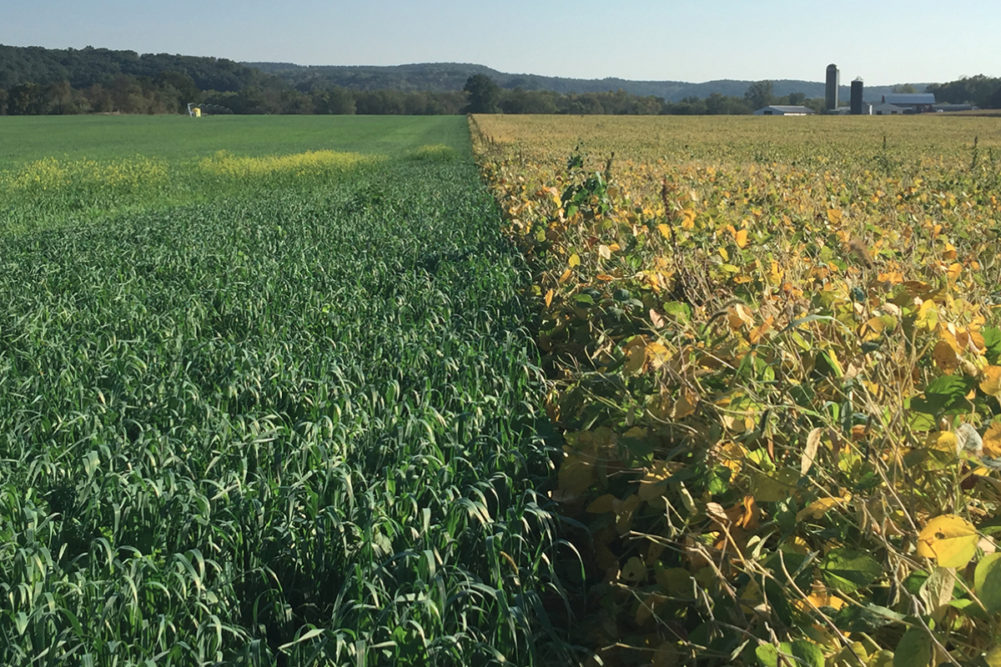 KANSAS CITY — Whole Foods Market identified regenerative agriculture as one of nine leading food and beverage trends in 2020. The supermarket, a division of Amazon.com, Inc., predicted consumers would be drawn to products that support regenerative practices. The forecast could be characterized as bold given the public’s lack of familiarity with the concept: 2019 data from the International Food Information Council Foundation indicate only 10% of consumers are familiar with and interested in regenerative agriculture.
KANSAS CITY — Whole Foods Market identified regenerative agriculture as one of nine leading food and beverage trends in 2020. The supermarket, a division of Amazon.com, Inc., predicted consumers would be drawn to products that support regenerative practices. The forecast could be characterized as bold given the public’s lack of familiarity with the concept: 2019 data from the International Food Information Council Foundation indicate only 10% of consumers are familiar with and interested in regenerative agriculture.
What interest in regenerative agriculture has emerged is credited in part to a 2016 TEDx talk delivered in Grand Forks, N.D., by Gabe Brown, a grower whose farm is near Bismarck. Mr. Brown cited data showing soil depth in Walsh County, N.D., shrinking to 15 inches in 2014 from 34 inches in 1960. He blamed the soil degradation on tillage and monoculture, which he said leaves soil susceptible to erosion and diminishes its capacity to support beneficial microbes and absorb water.
Describing the status quo as unsustainable, Mr. Brown advocates the widespread adoption of five steps he believes are central to regenerative agriculture ... minimizing mechanical disturbance of soil (no-till agriculture), applying armor to the soil in the form of cover crops, embracing crop diversity, leaving roots in the ground as long as possible and allowing animals to graze farmland.
While there is considerable debate over exactly what elements are required for regenerative agriculture and how new the concepts behind sound land management are, the potentially monumental benefits of such practices beyond enhancing soil productivity have sparked enthusiasm.
Advocates believe regenerative agriculture has the potential to slow or even reverse climate change. Tilling the soil, typically in preparation for planting, releases carbon into the atmosphere. The adoption of no-till practices leaves more carbon in the ground. The benefits are multiplied through the planting of perennial and cover crops. The latter contribute to biodiversity and soil health. By contrast, Mr. Brown said monoculture depletes soil nutrients, necessitating the use of fertilizer, which are fossil fuel intensive.
Also of interest is the potential for regenerative agriculture to provide major benefits related to water. Tilling impairs the porosity of soil and reduces capacity for water infiltration. Ponding and erosion result. General Mills, Inc., a proponent and supporter of regenerative agriculture, said the practice will make land “more resilient to extreme weather” and will enhance water infiltration, which the company said has been shown to benefit area lakes, rivers and streams. For growers, the benefits are greater nutrient retention in the soil.
Progress toward adoption of regenerative agriculture practices is not expected to be rapid. A General Mills project announced recently is a three-year pilot engaging 24 wheat growers around the Kansas Cheney Reservoir watershed, a water source for 400,000 Kansans. The effort follows a 2019 General Mills initiative in North Dakota and Canada to encourage regenerative agriculture among oat growers across 45,000 acres of farmland. Still another initiative by the company involves its Cascadian Farm brand, and an effort to commercialize Kernza, a perennial grain with deep roots, developed by The Land Institute in Kansas. The company has established a goal to advance regenerative practices on 1 million acres of farmland by 2030.
General Mills is not alone among food, beverage and processing companies stepping forward to explore regenerative or other approaches toward sustainable agriculture. As major customers of growers, flour millers and other processors increasingly are assuming responsibility to ensure the grain they source has been cultivated in a manner viewed as appropriate not only by bakers and other customers but by consumers as well. General Mills believes regenerative agriculture practices will increase farm profitability and is supporting training programs in the hopes of establishing a critical mass of growers pursuing such practices. Gaining grower buy-in holds the key to effecting a potential revolution in agricultural practices.





